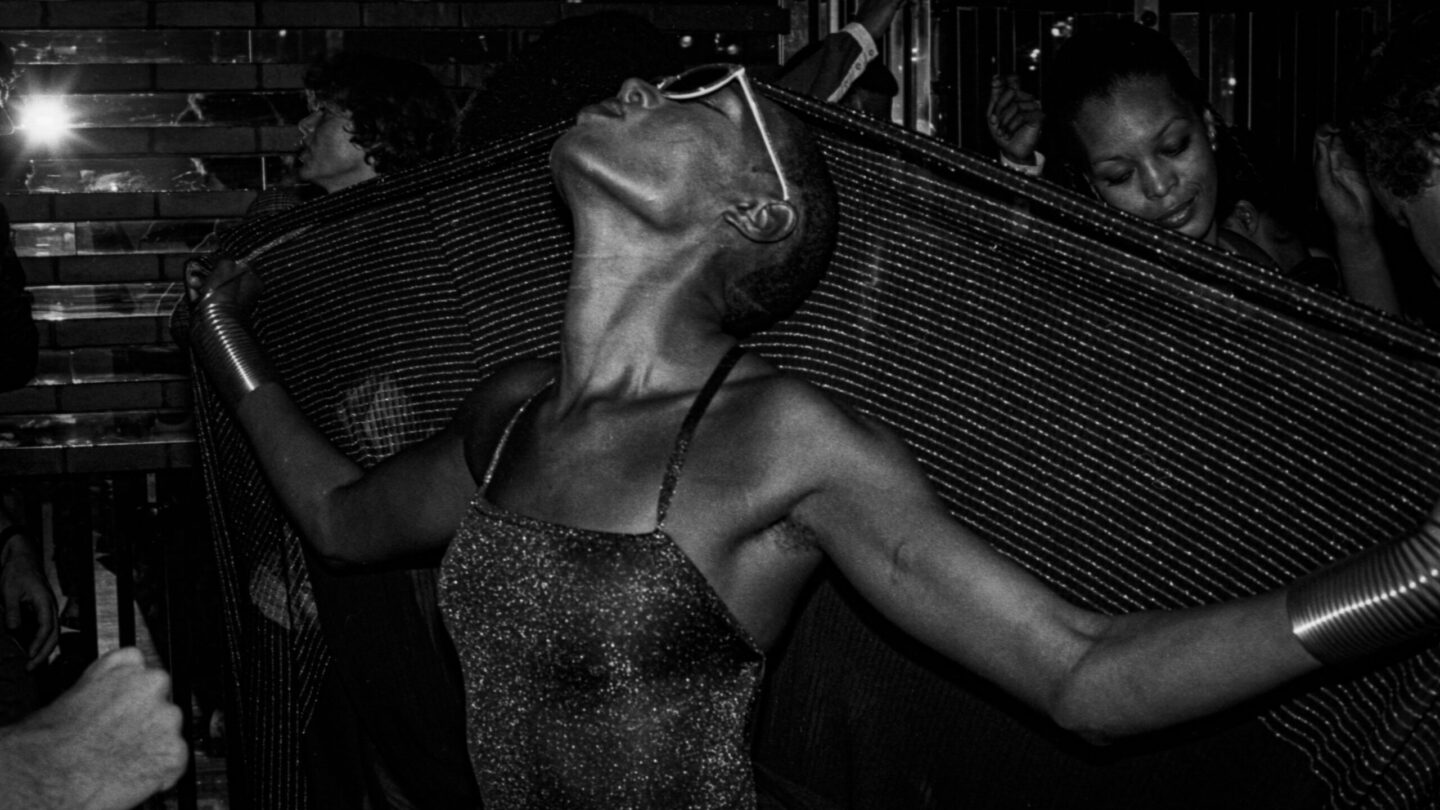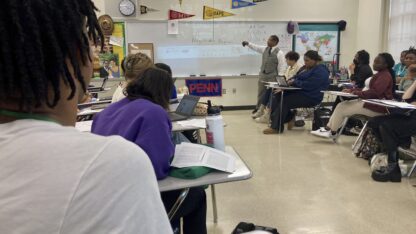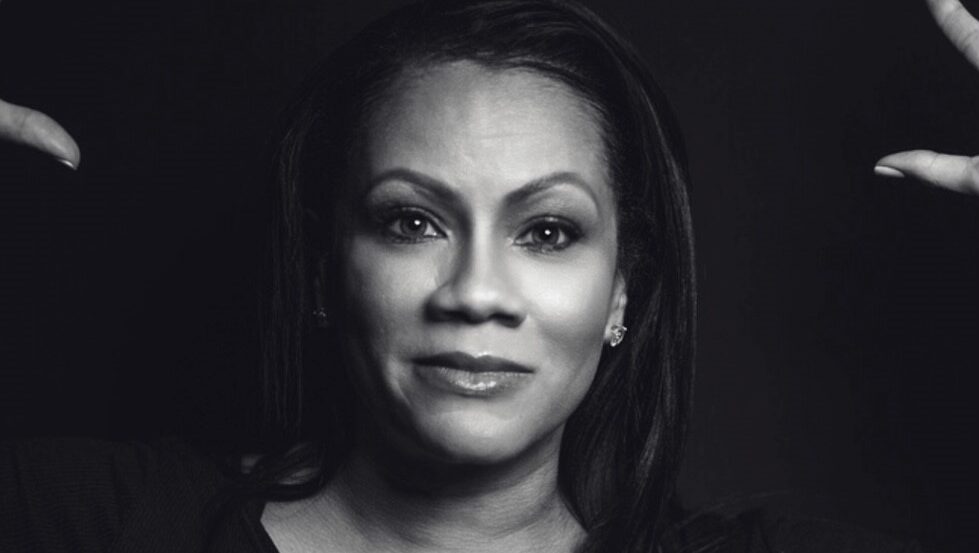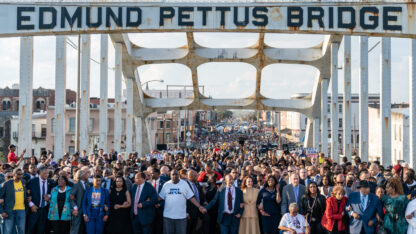America’s history of depicting Black visual images has often demonized and characterized African-Americans in dehumanizing ways. For centuries, Black artists, scholars and activists have worked tirelessly to counter negative images and narratives as they envision themselves. The exhibition “Black American Portraits” highlights and restores the dignity and humanity of Black images spanning over two centuries, from the 1800s to the present. The mediums range from painting, to drawing, to photography, mixed media and more.
The show, opening at Spelman College on Feb. 8, is co-curated by Liz Andrews, Spelman College Museum of Fine Art Executive Director, and Christine Y. Kim, the Tate’s Britton Family Curator-at-Large. Liz Andrews joined “City Lights” host Lois Reitzes via Zoom to share how the exhibition participates in a changing discourse around Black self-representation in visual art.
Interview highlights:
How the curators’ past projects laid the groundwork for “Black American Portraits:”
“‘Black American Portraits’ was originally a companion show for the Obama portraits [exhibition], and of course, Christine coming out of the Studio Museum [in Harlem] and having such a dedication to African-American art and art of the African diaspora, alongside my expertise in visual images of Barack Obama, was a perfect meeting of the minds, and we knew that people were going to come out to see the Obama portraits at this moment in time. I’d say those portraits might be, for many people, as recognizable as the Mona Lisa. People wanted to see them, but we wanted people to walk away with a deeper history. It’s not as if these images, these portraits appeared out of nowhere.”
“There’s a long history of portraiture as a tool of power, and so in the summer of 2020, we’d seen [art scholar] David Driskell pass away. We had seen the horrifying images of George Floyd and others, brutally and violently dying and abused at the hands of vigilantes and police, and so we thought to ourselves, ‘This is a moment in time where there is an abundance of images going into our psyche that are normalizing Black suffering and death,'” said Andrews. “Of course, this is part of a long history of images of Black people going all the way back to enslavement that have been used to justify slavery and injustices. So we thought to ourselves, ‘What we need at this moment in time is a show, an exhibition, a project that focuses on joy and beauty and complexity, and thinking about the ways that Black Americans have seized the medium of portraiture for our own purposes.'”
Diverse voices at the forefront of Black portraiture:
“It has artists of all gender – primarily Black, but not entirely. There are several non-Black artist allies with images in the show. But for Spelman, we have acquired four new artworks that will be exclusively at the Spelman College Museum of Art presentation; two sculptures by the incredible Harlem Renaissance artist and force of Augusta Savage. We have a photograph by the Atlanta-based photographer Sheila Pree Bright that depicts Spelman alumna Stacey Abrams during her 2018 run for governor. And then, finally, we have a painting that is truly special. It’s a commission that we did with Calida Rawles, a painter based out of Los Angeles, California, who graduated from Spelman College, who does these beautiful, large-scale paintings of primarily women underwater.”
Andrews went on to explain, “When you walk into the gallery, there’s a hallway and then a large wall, called a signature wall. There will be two paintings on that wall: one by Amy Sherald, who of course, painted Michelle Obama’s presidential portrait for the National Portrait Gallery. And then next to that will be Calida Rawles’ new work, which will be unveiled at the Spelman Museum, and I think that seeing the images, people will be really blown away.”
Tracing Black American portrait photography to its roots:
“Photography was invented in France in 1839, and in the following decade, it really took off in the United States more than anywhere, and primarily through portrait photography. Now, of course, this coincided with emancipation,” recounted Andrews. “So you have this brand new technology that has since changed the way we see ourselves and the world, and this newly freed Black population that is eager to create narratives and visions of their own.”
“You see photo studios coming up around the country, and this is the first time that Black Americans could participate in the economy of the nation as something other than a commodity to be bought and sold. So you found Black photographers opening up studios. You found that Civil War soldiers and people of some means would go and have their portrait made, and bring things like watches to show off class and status, books to indicate education, flags, any of the most prized possessions to tell a story – to say, ‘I am not these negative images that you have made of me. This is who I am. This is who we are.’ And that is a legacy that has continued all the way through today.”
“Black American Portraits” is on view at Spelman College Museum of Fine Art, Feb. 8 – June 30. More information is available at https://www.spelman.edu/about-us/museum-of-fine-art.









